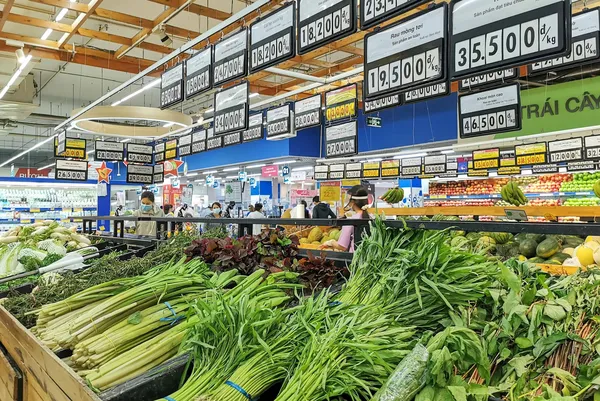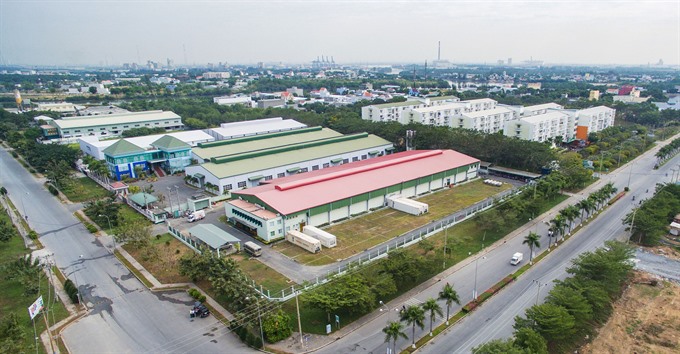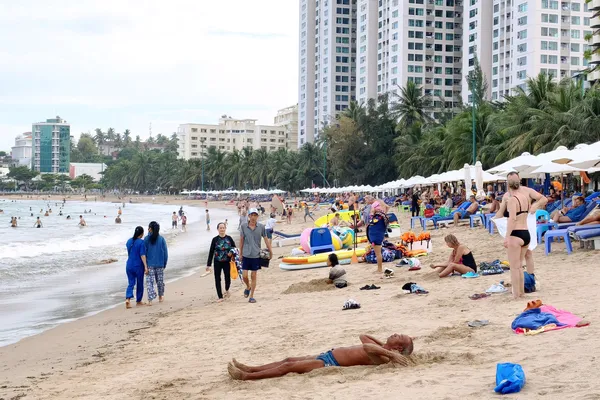 Economy
Economy

The strong development of industrial parks would make a large contribution to the domestic property market, according to experts.
 |
| A view of Long Hậu industrial park in southern Long An Province. The strong development of industrial parks would make a large contribution to the domestic property market. – Photo longhau.com.vn |
HÀ NỘI – The strong development of industrial parks would make a large contribution to the domestic property market, according to experts.
In 2017, registered foreign direct investment (FDI) in Việt Nam rose 44.4 per cent, with 44.2 per cent of total inflows going to manufacturing and processing. Off the back of a successful APEC last year, the Government will focus on attracting high-tech and environmentally friendly projects. Investment will be encouraged in renewable energy projects, high-tech agriculture and smart cities, said Savills Việt Nam.
“We’re seeing growing investor interest in the industrial market, directly into industrial zones as well as a rise in those seeking income-producing industrial assets, build-to-suit opportunities and logistics-based warehousing opportunities,” said Neil MacGregor, managing director of Savills.
He said up to two thirds of Japanese enterprises hoped to expand the scope and scale of business in Việt Nam. Meanwhile, many enterprises said that there was a tendency to move factories from China and India to Việt Nam, opening great opportunities for industrial real-estate.
Việt Nam has 325 industrial parks with a total area of 94,900ha. HCM City, Bắc Ninh, Thanh Hóa are leading in attracting investment to these parks. Hà Nội has also attracted foreign businesses, especially to many industrial parks in suburban regions.
Under the development plan for Hà Nội, the city will have nine more industrial parks on a total area of 2,360ha by 2020, an increase of 132 per cent against current supply.
Besides connecting factories to main roads to attract more investors and increase the occupancy rate in industrial parks, localities need to find solutions on promoting development of residential and commercial areas around the parks, Savills said.
The development of urban and commercial areas around industrial parks would meet the demand for workers’ homes.
Expert Đặng Hùng Võ said Việt Nam’s industrial real-estate segment had development well and had suffered less impact from the market than other property segments.
Meanwhile, JLL Việt Nam said more than 1,300ha for developing industrial parks were expected to enter the southern market in the next year, mostly from extended phases of existing projects.
JLL said occupancy and rental growth rates were both expected to go higher due to active occupier demand and positive economic prospects. Demand for good-quality ready-built space and related services in industrial parks was likely to increase strongly.
To support the trend, Savills launched an industrial services wing in January to support industrial clients in market entry, portfolio diversification, expansion, acquisition/disposal and strategic leasing.
It will introduce opportunities in a variety of locations, including Tân Thuận Export Processing Zone, Việt Nam-Singapore IP I, Hiệp Phước Industrial Park, Nhơn Trạch II Industrial Park, Châu Đức Industrial Park, Phước Đồng Industrial Park and Lộc An Bình Sơn Industrial Park.
JLL Việt Nam said at it quarterly report on the HCM City property market in Q4/2017 that the Southern industrial supply in the second half of 2017 was relatively constant compared to that in the first half, with a total leasable land area of about 24,000 ha.
Of the total, Bình Dương and Đồng Nai remained the leading markets, accounting for nearly 60 per cent, given their better accessibility to transportation infrastructure.
The vacancy rate in the operating IPs stood at about 25 per cent at end-2017, down 1.8 per cent from 4Q 2016 driven by healthy demand.
A healthy performance was observed in existing ready-built factories, which recorded more than 85 per cent occupancy rate, given the strong demand and limited leasable stock. - VNS




